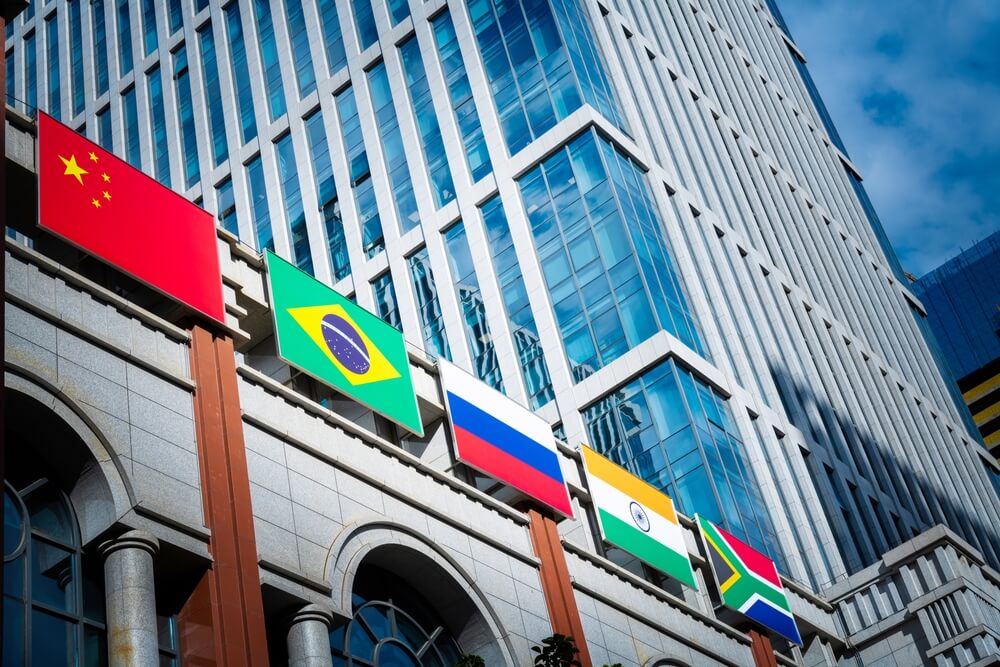A summit of BRICS emerging economies in Rio de Janeiro on 6-7 July comes hard on the heels of a meeting last month of Latin American and Caribbean states in Beijing, at which China offered billions of investment as part of its regional rivalry with the US.
In Rio, Brazil will seek to steer Latin America in defending multilateralism – currently a dirty word in Washington – as it straddles a fine line between China and the US.
“It's important to understand [the fate of Latin America] doesn’t depend on anyone else,” Brazilian President Luiz Inacio Lula da Silva said in Beijing. “It does not depend on [Chinese] President Xi Jinping, it does not depend on the United States, it does not depend on the European Union, it depends solely and simply on whether we want to be great or continue to be small.”
Belt and Road is going strong
Looking at the numbers, Beijing would appear to be winning. China is South America’s top trading partner, reaching a record $518 billion in 2024, and it may exceed $700 billion by 2035.
China announced last month a new $9 billion credit line, fresh infrastructure investment, and promised to import more from Latin America.
China’s Belt and Road infrastructure initiative is going strong, but it has had hiccups with some projects hitting delays and quality concerns, while Panama has said it will not renew its membership in the initiative.
On the minus column for the US is its tariff war
Beyond economics, Beijing is seeking to push more Latin American countries away from recognition of self-ruled Taiwan, which China considers one of its provinces. Of the 12 countries that have diplomatic ties with Taiwan, seven are in Latin America or the Caribbean.
Also on the minus column for the US is its tariff war, which is forcing Latin American countries to negotiate better trade terms while China is promising to buy more products from the region, such as soybeans, as it did during Donald Trump’s first term.
The US is losing ground to China
Trump has also provoked deep consternation in the region with his bullying vows to take over the Panama Canal.
The US has reiterated that it views the Western Hemisphere as its sphere of influence in a revival of the Monroe Doctrine, the 1823 declaration by US President James Monroe that warned Europe not to fiddle in the Americas.
"Beijing is investing and operating in the region for unfair economic gain, and together, in order to prevent conflict, we need to robustly deter China's potential threats in the hemisphere,” Pete Hegseth, US defence secretary, said in a 5 May statement.
This was countered by Miao Deyu, China’s assistant foreign minister, who told reporters: “What the people of Latin America and the Caribbean seek are independence and self-determination, not the so-called ‘new Monroe Doctrine’.”
The battle for hearts and minds between the US and China
If public opinion in Latin America is anything to go by, the US is losing ground to China.
Some 49% said they think China provides better investment and financing opportunities compared with 32% who said the same about the US, according to an Economist poll.
In the battle for hearts and minds, Beijing has even taken to advertising its presence in Latin America on the web site of its State Council information office.
A recent post showed a series of photographs of how Chinese symbols and brands are making more of a “presence in the daily lives of locals.” The images showed Chinese restaurants, trains, and cultural events across the continent that are “turning the vision of deepening interactions between China and Latin American countries into reality.”
Swamped by either China or the US
Brazil’s Lula will have to show delicacy and resolve if he and the region are not to be swamped by either China or the US.
He has raised tariffs on iron, steel and fibre optic cable, much of which comes from China. Mexico also needs to protect its economic interests reflected in its much larger trade ties with the US.
The US continues to flex its muscles. After Colombia’s President Gustavo Petro said he planned to join China’s Belt and Road, the US hit back with a threat against the region’s exports.
 Next month’s BRICS summit will be carefully watched to see how Brazil manages to craft a joint stance among the disparate members
Next month’s BRICS summit will be carefully watched to see how Brazil manages to craft a joint stance among the disparate members
“Petro’s rapprochement with China is a great opportunity for Ecuadorean roses and Central American coffee [in the US],” said Mauricio Claver-Carone, special envoy for Latin America at the US State Department.
However, amid the US tariff war, China is essential to avert “regional economic disaster,” Luis Almagro, outgoing Secretary-General of the Organization of American States, told the Financial Times.
Next month’s BRICS summit will be carefully watched to see how Brazil manages to craft a joint stance among the disparate members, including Indonesia that joined the group in January.
Egypt, Ethiopia, Iran, and the United Arab Emirates came on board in 2024. Nine countries – Belarus, Bolivia, Cuba, Kazakhstan, Malaysia, Nigeria, Thailand, Uganda, and Uzbekistan – have official “partner country” status.
A big question is whether the US will respond with carrots or sticks.
“For the United States, failure to recalibrate its approach to regional diplomacy risks further alienation and erosion of soft power in its traditional sphere of influence,” wrote Enrique Millán-Mejía of the Atlantic Council.
The signals point to a deepening rejection of Washington, along with fear of how it may respond.